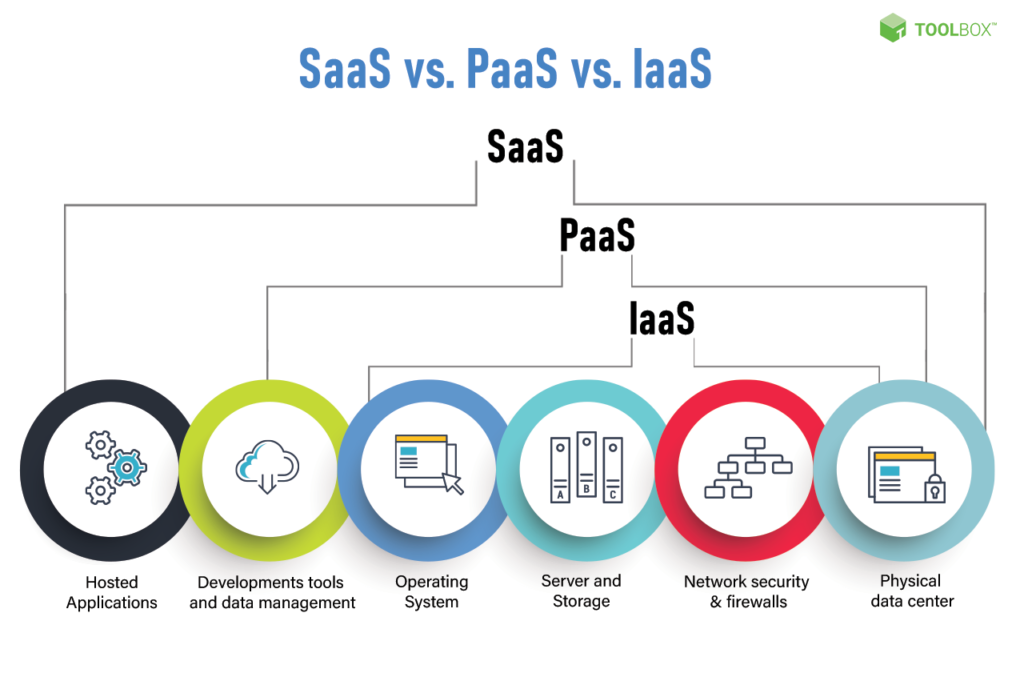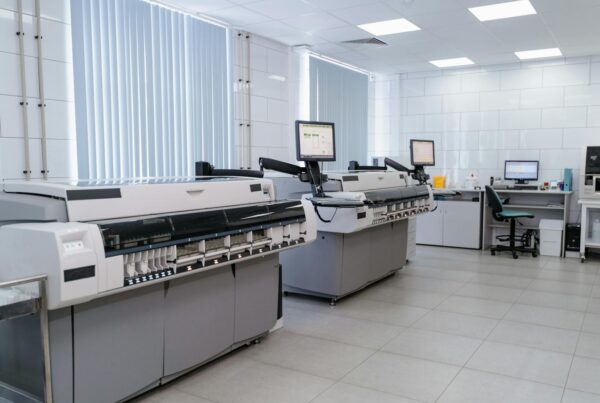Table of Contents
What is SaaS?
Software as a Service (SaaS) is a model in which the core software is hosted on a remote server. This allows users to install only the client part on their devices, ensuring enhanced security for data storage, modern protection protocols, and encryption. A SaaS development company can grant access to an unlimited number of users after successful registration.
In the SaaS model, client-server interaction occurs through the internet. The end user of the software product does not need to maintain a physical or virtual server; the developer takes care of everything. The server-side operations in SaaS models are hosted on cloud storage, providing ample disk space and compliance with all security standards.
Advantages of SaaS
- Global Access: Users can access information on the server from anywhere with internet connectivity.
- Subscription Model: Reduces costs as users do not need to purchase the software outright.
- Scalability: Quick and easy scaling of applications to accommodate more users or larger workloads.
- Reliable Data Storage: Ensures data safety with backup copies for quick recovery.
- Security: Protects information from unauthorised access by adhering to modern security protocols.
- Automated Updates: Software updates are automatically implemented when important changes are made.
- Cross-Platform Availability: Accessible on different platforms and devices.
Thanks to these benefits, the popularity of SaaS models is growing. They are actively used in various fields due to their universal applicability.
Applications of SaaS in Art and Design
The realm of art and design is significantly impacted by SaaS applications. Here’s how SaaS is transforming this creative industry:
Graphic Design and Illustration
SaaS applications like Adobe Creative Cloud have revolutionised graphic design, offering tools such as Photoshop, Illustrator, and InDesign via a subscription model. This enables designers to access the latest features and updates without significant upfront costs. Collaboration features allow multiple designers to work on the same project in real-time, regardless of their location.
3D Modelling and Animation
Tools like Autodesk’s SaaS-based software, including Maya and 3ds Max, are pivotal in 3D modelling and animation. These applications provide powerful resources for creating detailed 3D models and animations, widely used in industries such as film, gaming, and virtual reality.
Web Design and Development
Platforms such as Webflow and Figma facilitate web design and development through cloud-based interfaces. These tools offer collaborative environments where designers and developers can create, share, and refine web designs efficiently. Real-time collaboration features ensure that team members can provide input and make changes instantaneously, streamlining the design process.
Digital Art and Photography
SaaS applications like Lightroom and Corel Painter provide photographers and digital artists with advanced tools for editing and creating artwork. The cloud-based nature of these tools ensures that artists can access their work from anywhere and collaborate with others seamlessly.
Typography and Font Management
SaaS solutions such as Adobe Fonts and Google Fonts allow designers to explore, manage, and implement a wide variety of fonts in their projects. These platforms ensure that designers always have access to the latest typographic trends and can integrate them into their work effortlessly.
Integration of AI in Art and Design
Artificial Intelligence (AI) is increasingly being integrated into SaaS applications within the art and design sector. This integration offers numerous advantages:
- Optimising Business Processes: AI can automate repetitive tasks, allowing designers to focus on creative aspects.
- Enhanced Analysis: AI tools can analyse design trends and user preferences, providing insights that inform creative decisions.
- Large Data Handling: AI systems can quickly process and analyse large volumes of data, helping designers to refine their work based on analytics.
- Cybersecurity: AI enhances cybersecurity measures, protecting intellectual property and sensitive data in creative projects.
Future of SaaS in Art and Design
The SaaS model is continuously evolving, driven by the shift to digital technologies, the need for cross-platform compatibility, and the demand for secure, scalable, and collaborative tools. In the art and design industry, SaaS applications will continue to play a critical role by:
- Enabling Remote Work: With more designers working remotely, SaaS tools provide the necessary infrastructure for seamless collaboration and project management.
- Fostering Innovation: Continuous updates and new features ensure that designers always have access to cutting-edge tools, fostering innovation and creativity.
- Enhancing Security: Ongoing improvements in security protocols will protect sensitive creative work from unauthorised access and cyber threats.
As global analysts predict, SaaS represents the future of software applications. For businesses and individuals in the art and design industry, transitioning to SaaS models is not just a trend but a necessity to remain competitive and harness the full potential of digital tools.
SaaS applications are revolutionising various industries, including art and design. By providing scalable, secure, and collaborative tools, SaaS empowers artists and designers to create, share, and innovate like never before. Embracing SaaS in your creative endeavours can unlock new opportunities for growth, efficiency, and artistic expression.
For further reading and resources on SaaS in art and design, explore Adobe Creative Cloud and Autodesk Software to understand how these platforms are shaping the future of creativity.
Other Areas of SaaS Application Are Used
 While the focus here is on art and design, it is important to note that SaaS models are widely used in various other fields:
While the focus here is on art and design, it is important to note that SaaS models are widely used in various other fields:
- Accounting: SaaS solutions streamline financial management and reporting.
- Enterprise Resource Planning (ERP): Helps in integrating core business processes.
- Customer Relationship Management (CRM): Enhances customer interaction and satisfaction.
- Project Management: Facilitates planning, tracking, and collaboration.
- Analytics: Provides insights through data analysis.
- E-commerce: Powers online businesses with robust tools.
- Human Resource Management (HRM): Manages employee data and processes.
- Internal Communication: Improves collaboration within companies.
- Online Learning: Offers educational resources and courses.
- Medicine: Enhances patient care and management.
- Security Provision: Ensures safety through advanced protocols.
- Call Centres: Supports customer service operations.
- IT Development: Aids in software and application development.
- Construction Companies: Manages projects and resources efficiently.
Another major opportunity supported by applications based on SaaS models is working with Artificial Intelligence. AI is poised to significantly reduce personnel costs and increase productivity by optimising business processes, eliminating redundant tasks, providing precise analysis, conducting rapid analysis of large data volumes, and improving cybersecurity systems.
Conclusion
SaaS development is evolving. The shift to digital technologies, the need for cross-platform compatibility, and the demand for secure, scalable, and collaborative tools make these software products highly in demand. This contributes to the expansion of cloud technologies and the increased need for data security compliance, achievable through remote access. SaaS is the future, and transitioning to this software model opens additional development opportunities for businesses.








